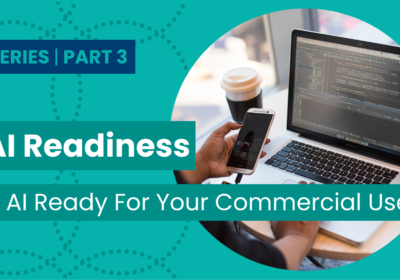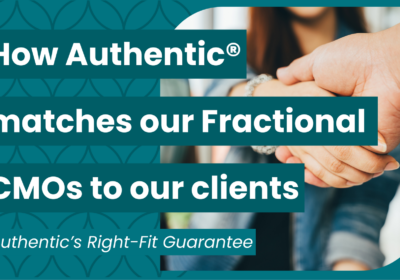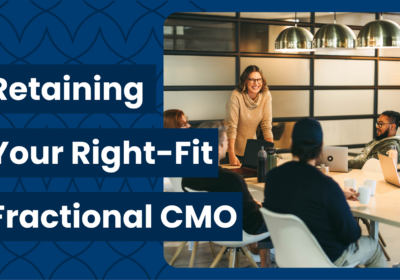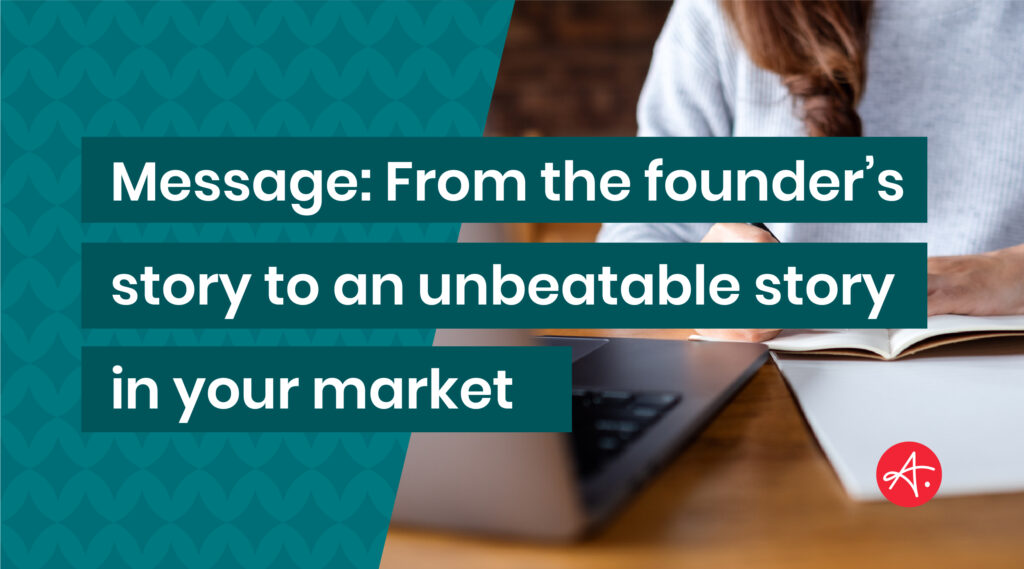
You know, but do they know?
Entrepreneurial businesses usually know what they do really well. But they often struggle to articulate it in clear, compelling, and differentiated ways. Typically, what results are many iterations of brand stories that focus on product or service features rather than on the value delivered to their customers. These many story iterations create confusing and inconsistent messages that can hinder growth.
Eventually, businesses realize that they need to approach their messages thoughtfully to mature and grow. But often, they aren’t sure how to get from where they are to having a story that stands firm against competitors.
The journey to a differentiated message is important — and tricky. But if a business can mature its message from the founder’s vision to an unbeatable story that wins against its competitors, it can generate brand trust and significant business value. At Authentic, we use our Authentic Growth™ Marketing Maturity Matrix to show the stages of maturity a business must go through to shape a story that connects with key audiences, creates opportunities for growth in new markets, and establishes brands as the best in their category.
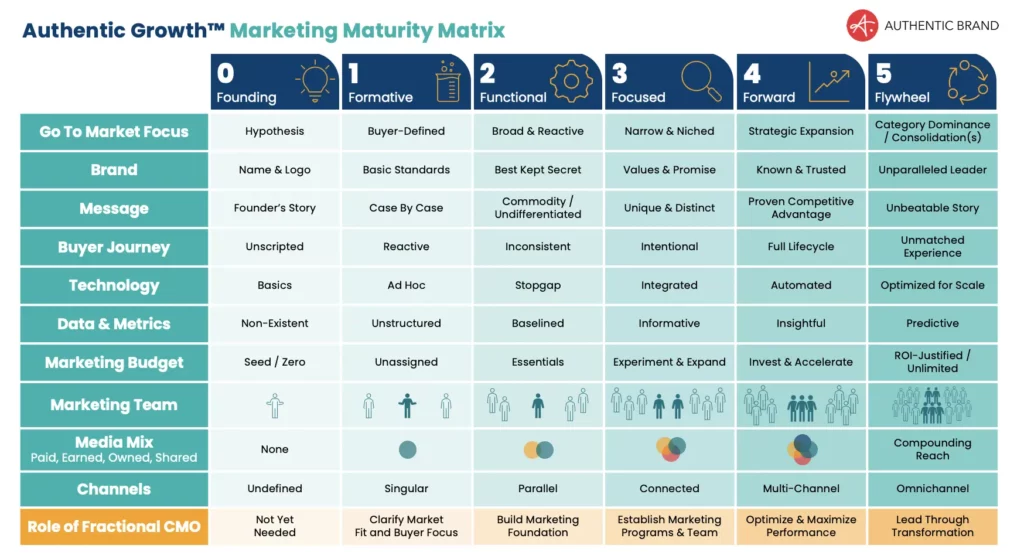
The path to delivering an unbeatable story: Stages 0 to 5
A company’s brand story often flows from the founder’s original vision but is quickly tested and iterated on with different audiences. Once a business finds its ideal market fit, it’s critical that the messaging becomes more consistent and narrows in on the brand’s differentiated value— focusing on customer benefits, not on the product or service features. Strategic messaging and marketing leadership can guide a business as it evolves its message to one that deeply resonates with target audiences and ultimately helps create a category-leading brand.
The following six stages demonstrate how a company moves through this progression.

Stage 0: Founding – Founder’s story
In almost any new company, founders bring something new to the world. Since their new offering doesn’t have a reputation yet, the founders must lean on their personal reputations to craft the brand’s first narrative.
The founders’ story may stem from companies they’ve founded, sold, or worked at, professional credentials, subject matter expertise, their character and trust, or some combination of these. Early clients will likely already know, like, and trust the founders.
For example, when our founder, Jennifer Zick, started Authentic, she had over 20 years of experience in sales and marketing leadership roles. As a result, Jennifer shaped Authentic’s initial story and relationships on the trust and expertise she had established in B2B professional services and technology. But Jennifer knew that for Authentic to grow, it would need to stretch beyond that story and those relationships through referrals to enter ecosystems of people who didn’t yet know her or Authentic.
How to mature to the next stage: Be intentional very early about capturing your wins and getting testimonials and referrals from the people who know and trust you. Create case studies that demonstrate that you have customers that are having success with your business, and remarket those successes so the story can grow from there.
Early in your entrepreneurial journey, it’s also essential to decide whether you’re building an individual brand as a subject matter expert or a company brand that you want to stand on its own brand merit and have value apart from the founder’s name. Too many founders get too far down the road relying on their name and reputation as the “champion,” only later to find it very hard to extract themselves. This limits their ability to create value in a business that is not owner-dependent.
What you’ll need: Proof points of your success (e.g., testimonials, reviews, and case studies), referrals into new ecosystems, and a clear decision about whether you’re building a personal brand or a company brand. If you’re building a company brand, show up as a company and not as an individual or small team; use language like “we” instead of “me” or “I.”

Stage 1: Formative – Case-by-case
Many early-stage growth companies aren’t thinking much about a cohesive message and brand story. Instead, they’re reacting to new inquiries and conversations, reshaping their pitch, story, slide deck, and collateral to reflect what that particular potential buyer or partner wants.
This reactive messaging isn’t always bad because this stage is for thoughtful experimentation to find out what fits and sticks. But you can’t stay in this stage for too long because too many versions of your story cause confusion in the market and may pull you into engagements that don’t align well with your core strengths or goals.
How to mature to the next stage: Be intentional that this is a moment of experimentation, but acknowledge you can’t stay in this stage forever. Pay attention to moments in sales conversations when the message “fits,” the deal comes together without much friction, and the resulting engagement feels right (on both sides) and is profitable. These clues show you’re on the right track with the right message and audience for the best, healthiest, happiest kind of engagement.
Reuse what works and test how it works or doesn’t work in other scenarios. Keep collecting these clues to refine the story further.
What you’ll need: Strong listening skills, time to reflect on past conversations to observe what is working and not working, feedback from prospects who did not choose you (and why), and input from those who did (and why). Lean into what is working. This is also a time when an external, objective perspective from an experienced marketer can help pinpoint emerging themes in best-fit buyers and identify the messages most likely to resonate with them.

Stage 2: Functional – Commodity/undifferentiated
By the time most businesses find their swim lane and market fit, they have a reasonably well-baked message. But more often than not, it looks and sounds a lot like the nearest direct competitor.
And while it’s helpful to use language the market understands, if you don’t stand out with a unique message and value proposition, you put your business in the commodity category: competing on price alone for a lookalike offering. To create a company with value, you have to bring something unique to the world — and message it accordingly.
How to mature to the next stage: Develop a strategic business plan, ideally supported by a business operating system and structure (such as the Entrepreneurial Operating System®). Work with an experienced business coach, advisor, and/or marketing leader who will challenge you (and your leadership team) to align on what makes your business truly unique today. Don’t shape this on what you wish or aspire to be but on what you can actually provide to the world now.
EOS calls this your “Three Uniques.” Any one of your three unique attributes might not be very unique on their own, but combining them provides the recipe for the real “secret sauce.” At Authentic, that’s our “marketers + methodology + mindshare.”
What you’ll need: A business plan articulating your company purpose, values, niche, unique qualities, and market fit (among other attributes). You may have the experience to build this plan yourself, but many entrepreneurs and their teams lack the necessary expertise or are myopic in their view of their own world. Bringing in a seasoned leadership coach, strategist, or EOS Implementer® is a wise choice at this stage, together with the right people in the right seats to round out your leadership team. This is often when growing businesses find value in engaging one or more fractional executives who add wisdom and leadership in functional areas where founders may not have experience or capacity.

Stage 3: Focused – Unique & distinct
Your “three uniques” are a strong anchor point for your message, but they are not a go-to-market message. They’re often company or solution-focused instead of customer-focused. Your buyers don’t care why you think your business is unique; they care about how you solve their challenges better than anyone else.
At this stage, you need to translate your unique qualities into customer-first language. Prospects who engage with your brand and its story need to see themselves in the narrative; your story should elicit an emotional connection with your buyer and help build trust.
For example, Authentic’s trademarked tagline is Overcome Random Acts of Marketing®. We came up with this phrase after our founder referred to spray-and-pray marketing tactics as “random acts of marketing” during a sales meeting. The phrase struck an immediate and noticeable emotional chord for the buyers in the room. After testing the phrase with more prospects, we realized it connected broadly with our target audience. Ultimately, “random acts of marketing” became foundational to our messaging strategy.
How to mature to the next stage: Now that you have a clear business plan and focus, you need to translate it into a go-to-market message with support from a branding and messaging expert. An experienced messaging strategist will use workshops, processes, and frameworks to extract the most powerful story from your business and then help you tell it in multiple formats across your channels: website, sales deck, boilerplate, elevator pitch, and more.
Depending on their background, an experienced marketer can either fill the role of the skilled messaging partner or help you find the right messaging strategist and creative resources needed to craft a differentiated go-to-market message.
What you’ll need: Guidance from a strategic marketer, support from an experienced brand messaging expert, and creative resources to bring your message to fruition through asset design, website development, campaign creation, and PR/communications. You’ll also need to invest time in training your team on the message to ensure everyone is on the same page, understands the story, and knows how to share it.

Stage 4: Forward – Proven competitive advantage
After you craft a message that articulates your company’s unique value, you have to test it. Until your message reaches the market, you won’t know whether it truly resonates. You might have nailed the message from the get-go or need to fine-tune it based on feedback. Be willing to go through iteration cycles until you land on the messaging sweet spot. You’ll know when you have it because prospects will “get it,” sales will become more streamlined, and you will attract more right-fit than wrong-fit buyers.
As you find the story fit, you can take it further to grow your business. When your message is truly differentiated and reaches the right audiences, it becomes a magnet to naturally attract the right employees, buyers, and partners, which helps you achieve healthier and more efficient growth.
How to mature to the next stage: Ensure your marketing is strategic (not random) and explore new channels that could reach your ideal audience. If your story works in your current segment or market, consider how it might help you expand into new offerings or markets. Train everyone that will push your story out — salespeople, marketers, channel partners, agency partners — on the new messaging. A strong story will help you break into new growth spaces more efficiently because you don’t have to work so hard to make yourself known.
What you’ll need: If you haven’t brought in marketing leadership yet, now’s the time to hire an experienced marketer who can move you from sales- to marketing-driven growth. A marketing leader (like a fractional CMO) can help you craft a strategic go-to-market plan, hire the right team of internal and external resources, set a budget, and define KPIs.

Stage 5: Flywheel – Unbeatable story
You did it; you found the whitespace, articulated a truly unique story, attracted the right stakeholders, and have consistently grown as a result. You may not be the biggest contender in your space (that’s okay!), but you’ve met the true objective: your market knows you as the best based on the promise your brand makes and delivers.
How to continue maturing: Being unbeatable is one thing, but staying unbeatable is another. Keep feedback loops active and open so you continually learn how to align your story with the changing market. Many businesses are considering or acting on mergers and acquisitions at this stage, which could trigger another moment to evolve your brand messaging and restart this messaging journey.
What you’ll need: A very skilled and strategic marketing team that works in close collaboration with sales, service, and product teams to keep a pulse on the market and metrics, anticipates moments when messaging needs adjustment, and knows how to move through the messaging process with the least disruption to employees, partners, customers, and other stakeholders. Messaging evolution is a fairly simple process for a stage zero startup, but it’s a very complex change management initiative for larger businesses. Having strong leadership and alignment from the top down for every pivot in messaging is critical.
Shaping your unbeatable story takes time — and strategic leadership
Authentic works with entrepreneurial businesses at every stage of the messaging journey: from companies that haven’t begun to think about their message to those facing a messaging pivot and those who have a strong story but need to reach new audiences or markets with it.
Wherever you are on your messaging journey, Authentic is here to provide the strategic leadership you need to bring together all elements that will help your story shine and truly differentiate your business. Let’s connect to discuss how we can get your business on a path toward messaging maturity.



